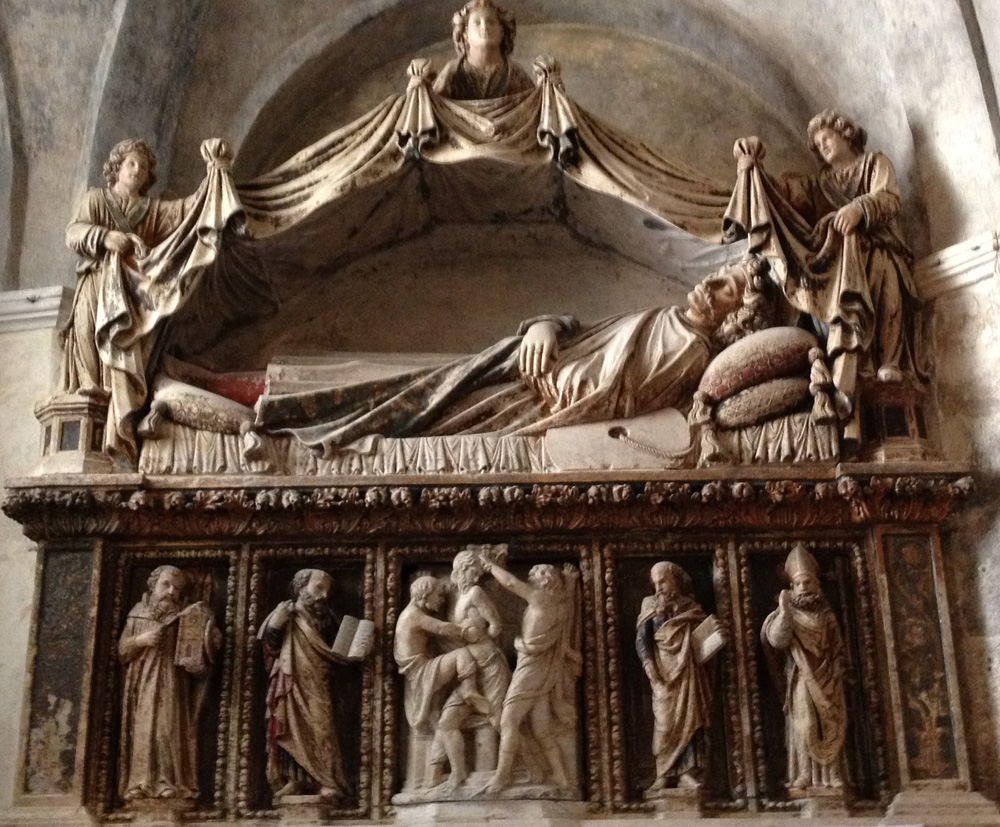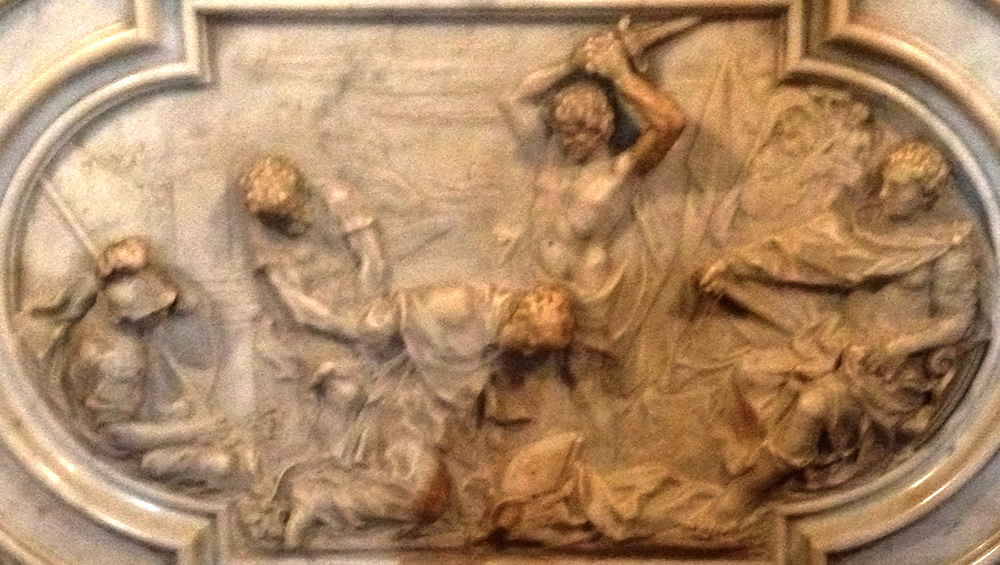The saint with the name Domnius (Domnii) has a vita from the 11th century that makes him as a disciple of St. Peter sent to Salona to spread the gospel. There he preaches the mysteries of Christian doctrine, supporting his teaching with miracles. But the pagan priests bring him before the prefect Maurelius, who sentences him to be stripped naked and beaten with cudgels. Hearing of this, the new Christians descend en masse upon Maurelius to protest. But he simply orders forty of them beheaded, unmoved even when Domnius resuscitates the son of a powerful associate of his. He offers the saint money if he will recant but Domnius refuses, so he orders him beheaded.
The Christians manage to preserve the saint's body, and when the era of persecutions ends their bishop builds a cathedral and has the body placed in it. Centuries later, Salona is destroyed by "the Goths" and the people move up the coast to the long-empty Palace of Diocletian, which they make over into the city of Split. They convert the temple of Jupiter into their new cathedral and place the body of the saint in it. (Acta Sanctorum, April vol. 2, 7-8.)
The quite different story of Saint Domnio (Domnionis) is told by the 13th-century Croatian historian Thomas the Archdeacon. In it the saint is a favored chamberlain of Maximian, the co-emperor of Diocletian, but secretly a Christian. When Maximian undertakes the great persecution of 303-306, Domnio secretly encourages the martyrs to stand fast. When the emperor finds out he orders Domnio to sacrifice to the gods or suffer death. Domnio flees for Rome, but Maximian's soldiers catch up and "set upon" him near the River Stirone in Italy. They behead him but he miraculously carries his head across the river and buries himself. Years later, the people of Salona take his body to their city and place it in the cathedral.
Whoever he might have been, a St. Domnius rests beneath the high altar of the cathedral in Split, where he is the city's patron saint. The frontal on the altar (top of this page) pictures soldiers beheading the saint in an interior space while Maurelius looks on from his throne. Above, the retable pictures the soldiers beating the saint at a pillar like the one at which Jesus was whipped. Both scenes follow the 11th-century vita rather than Thomas the Archdeacon.
 The cathedral also has some baroque paintings of the saint's life, and a church in Split's Poljud neighborhood has the only portrait painting I have encountered (right), with Domnius in episcopal garb and holding a crozier, processional cross, and maquette of the city of Split with its distinctive 11th-century tower.
The cathedral also has some baroque paintings of the saint's life, and a church in Split's Poljud neighborhood has the only portrait painting I have encountered (right), with Domnius in episcopal garb and holding a crozier, processional cross, and maquette of the city of Split with its distinctive 11th-century tower.
Source of portrait: Wikimedia Commons. All other photographs are by Claire Stracke, shared under Attribution-NonCommercial-ShareAlike license. Text prepared 2016-10-26 by Richard Stracke, Emeritus Professor of English, Augusta University.
Altar frontal, Cathedral of St. Domnius. Follow this link for a full-resolution copy of the photograph.
OTHER IMAGES

The retable above the main altar. Follow this link for a full resolution copy of the photograph.

Detail from the retable: St. Domnius is tied to a pillar like Christ and beaten with cudgels.
DATES
- Every May 7 Split has a festival called Sudamja to celebrate the feast of St. Domnius.
- Some ancient martyrologies give April 11 as the saint's day. The Acta Sanctorum, which is arranged by dates, also covers him on April 11.
NAMES
- In Croatian he is Sveti Duje.
BIOGRAPHY
- Thomas the Archdeacon, History of the Bishops of Salona and Split.
- Acta Sanctorum, April vol. 2, 5-11.
